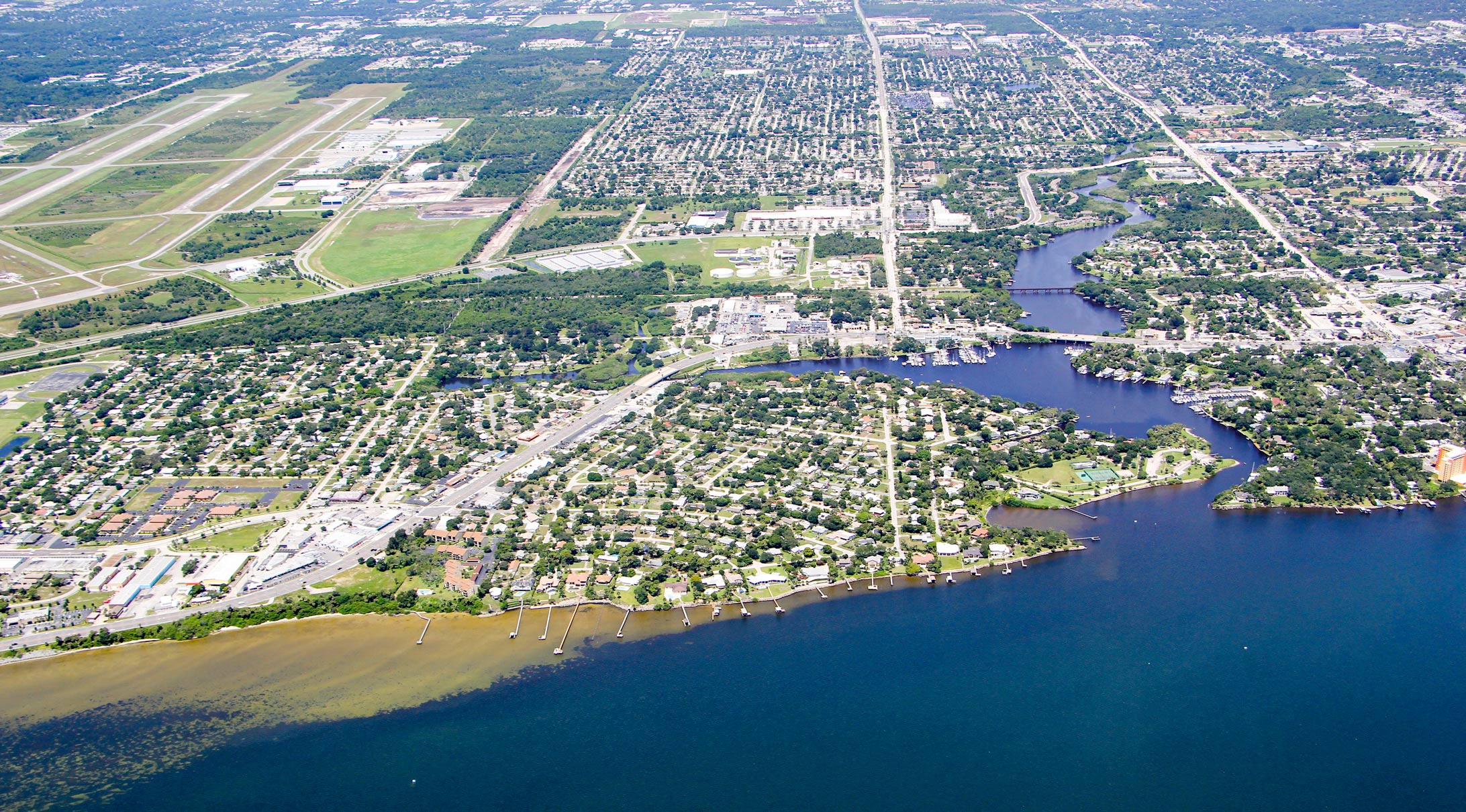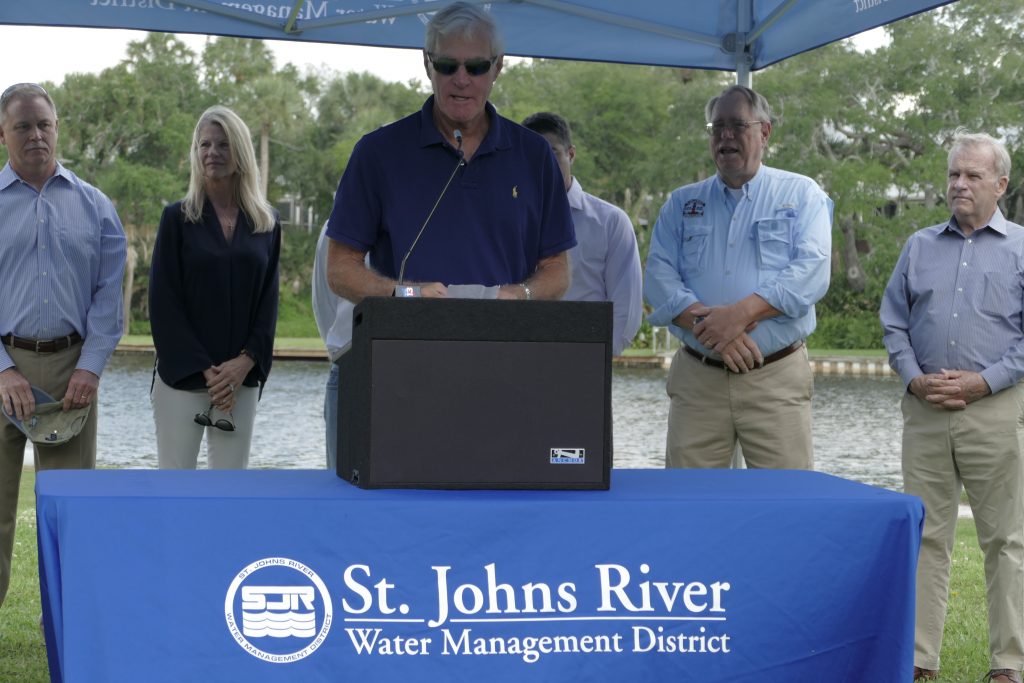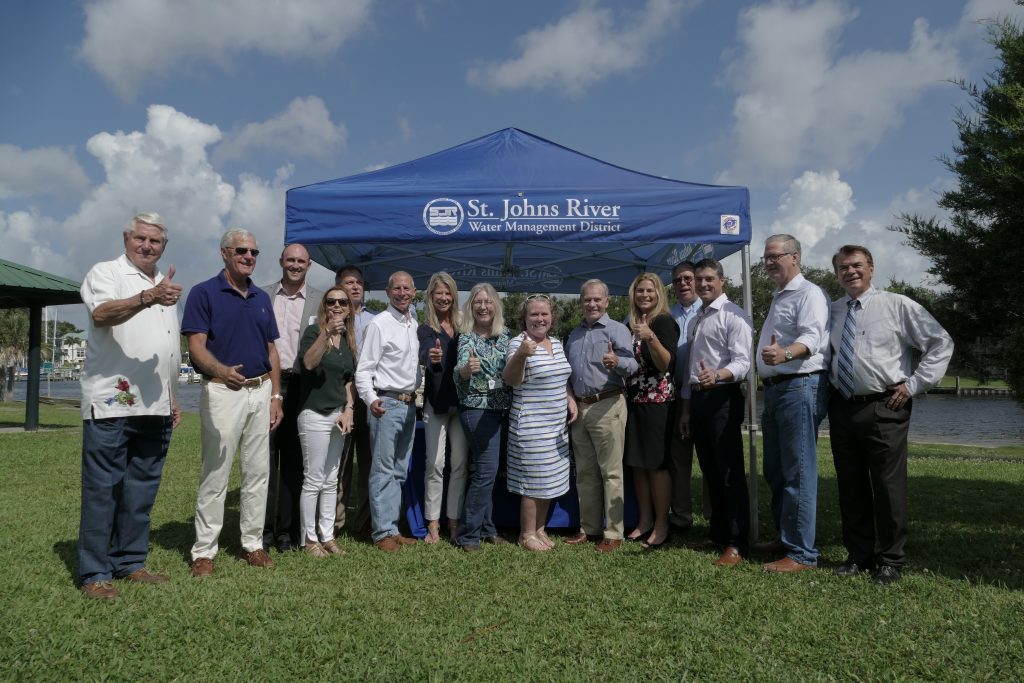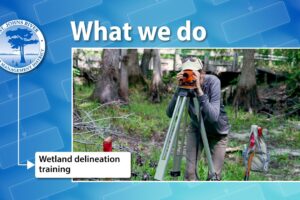District celebrates major muck removal from waterway
May 30, 2021
The Eau Gallie River, as seen from the air, flowing into the Indian River Lagoon. The dredge used in the project is seen toward the middle left in the photo, with Ballard Park at Hawthorne Point shown center right in the foreground, in this photo from 2018.
Picturesque Ballard Park is situated at the convergence of Melbourne’s Eau Gallie River and the Indian River Lagoon. Here, a historical marker denotes how the park was the winter-time village of the Ais Indians through the 18th century. Artifacts recovered from the village of Pentoaya date from 2000 BC to 1700 AD.
On May 13, the ancient village site was again a gathering place for the local community. On this occasion, celebrants marked the rebirth of the Eau Gallie River, which for decades had been laden with hundreds of thousands of cubic yards of organic muck.
The St. Johns River Water Management District hosted the celebration to highlight the completion of a challenging project that brought together legislators, government agencies and area residents: the removal of approximately 630,000 cubic yards of gooey, black muck from the revered waterway.
“This project highlights the progress possible in improving conditions in the Indian River Lagoon when we all work together,” said St. Johns River Water Management District Executive Director Dr. Ann Shortelle. “We’re celebrating not only a cleaner waterway but the active community here which led a grass-roots effort to improve water quality. Our legislators listened and responded by appropriating $20 million in funding.”
The initial plight of the Eau Gallie River is repeated throughout urban Florida, where rain ferries sediments from streets and parking lots into storm drains that feed into waterways. Over decades, the accumulated sediments, called “muck,” smother the bottom of a waterway. In portions of the Eau Gallie River, the muck was 12 feet deep.
So, what exactly is muck and why is it harmful to Florida’s waterways? Muck is a mixture of dirt, clay, grass clippings, leaves and other organic matter that accumulates over time and settles at the bottom. As muck decomposes, it consumes oxygen needed by fish and it releases nutrients that feed algal blooms. When stirred up, muck also clouds the water and blocks sunlight needed by seagrass to survive.
Over the past 20 years, the District has completed and partnered on projects that eliminate sources of muck or remove muck deposits — crucial steps toward improving water quality in the Indian River Lagoon. In Brevard and Indian River counties, the District has dredged Crane Creek, Turkey Creek and the Sebastian River, but it had never dredged muck from the Eau Gallie River.
Several years ago, a group of residents who collectively called themselves EGRET (the Eau Gallie River is Environmentally Threatened) persuaded the Florida Legislature to appropriate funding necessary to dredge the Eau Gallie River and a tributary called Elbow Creek. Residents decried the condition of the waterway, where the gelatinous muck was thick enough to pull one’s shoes off through sheer suction. Some residents compared it to black mayonnaise.
In 2014, the Florida Legislature approved an appropriation of $20 million for a dredging project in the Eau Gallie River. The Florida Department of Environmental Protection was charged with disbursing the money to the District, which oversaw the project. Brevard County stepped up to provide a site near the county landfill to temporarily store the dredged muck; the Florida Inland Navigation District contributed $3.75 million toward project design, permitting and construction of a Dredge Material Management Area (DMMA); and the city of Melbourne contributed $50,000 for the initial feasibility study.
Three years later, in spring 2017, the District kicked off the dredging project with a ceremony at the DMMA. A black slurry mixture of muck and water chugged from a roughly four-mile-long pipeline linking the dredger to the containment area. The next two years was an endless cycle of pumping, drying and mounding the equivalent of more than 40,000 dump truck loads of muck. So much material was removed from the river that the containment area is likely one of the highest points in Brevard County.
Residents say the project has revitalized the waterway. Amy Herrell, leader of EGRET, said she can already see the improvement in water quality in the Eau Gallie River.
“I would say that we, Brevard County residents, have to be advocates for our Indian River Lagoon and estuaries,” she said. “We are the ones who see it and live around it every day. It is our responsibility to speak up to protect it. I have already seen much improvement in the Eau Gallie River, the water is very clear. You can see the wildlife below the water level, even a horseshoe crab back in my area — which is a new one for me.”








